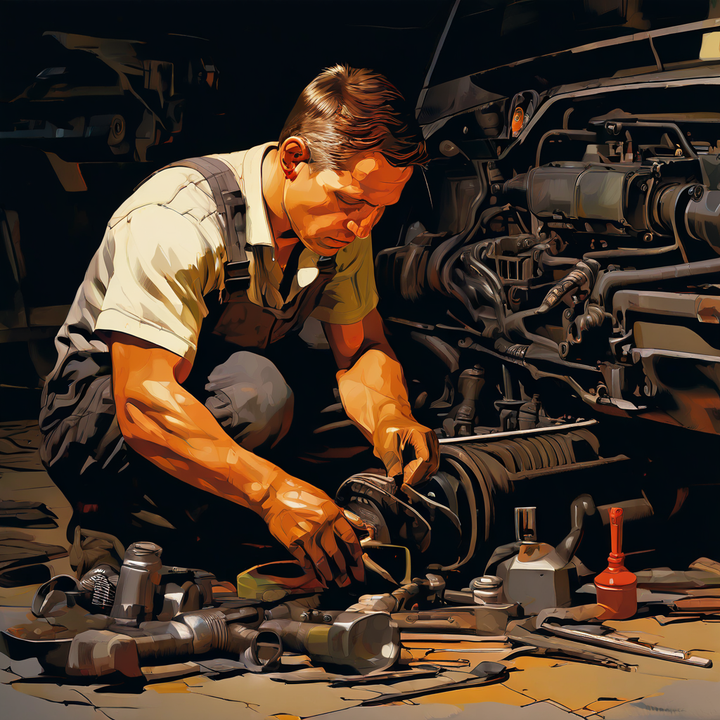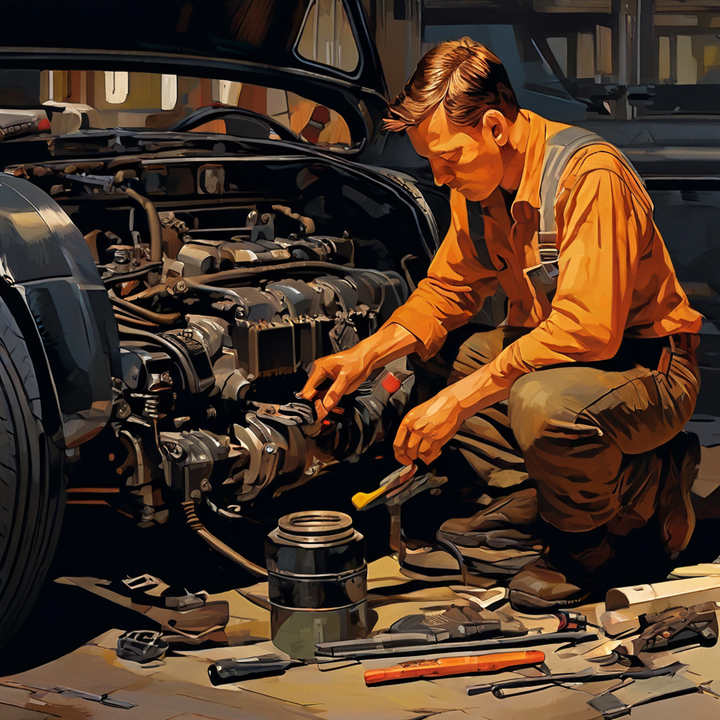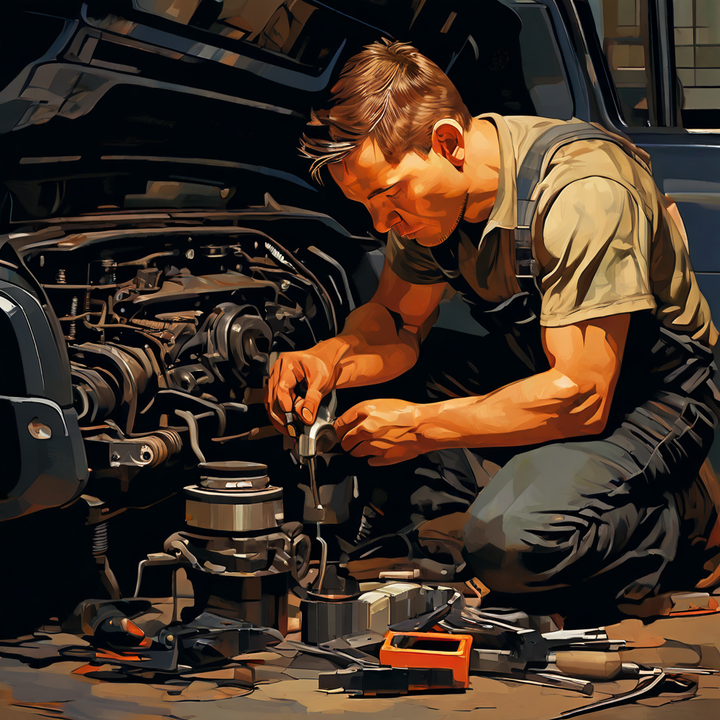


Gasoline, or petrol, is a crucial fuel that powers most modern vehicles. However, when gasoline becomes contaminated or stale, it can lead to various issues that can negatively impact a car's performance and potentially cause damage to its components. Understanding the symptoms of bad gas is essential for car owners to identify and address the problem promptly.

Bad gas in cars can stem from several underlying issues, and understanding these causes is crucial for proper diagnosis and repair. Let me walk you through the most common culprits:
One of the primary reasons for bad gas is contamination or staleness. Fuel can become contaminated with water, dirt, or debris if stored improperly or for an extended period. This can clog fuel lines and injectors, preventing the proper flow of gasoline to the engine. Additionally, gasoline can lose its combustibility if left unused for several months, especially fuel blends containing ethanol.
Another common cause of bad gas symptoms is faulty fuel system components:
| Component | Issue |
|---|---|
| Fuel Pump | A failing fuel pump cannot deliver the proper fuel pressure and volume to the engine, leading to misfires and poor performance. |
| Fuel Filter | Clogged fuel filters can restrict fuel flow, starving the engine of fuel. |
| Fuel Injectors | Leaky or stuck-open fuel injectors can cause an improper air/fuel mixture, resulting in various engine issues. |
Lastly, mechanical issues within the engine itself can contribute to bad gas symptoms. Problems with the air intake system, such as leaks or clogs, can cause lean or rich air/fuel conditions, leading to poor combustion. Faulty oxygen sensors can also provide incorrect data to the engine's computer, resulting in improper fuel delivery and related issues.
As a mechanic, I follow a systematic approach to checking and diagnosing bad gas issues. Here are the steps I typically take:

Check the fuel cap and tank for any leaks or damage that could allow contaminants to enter the system.
Inspect fuel lines and connections for cracks, leaks, or kinks that could restrict fuel flow.
Check the fuel filter and replace if it's clogged or due for maintenance.
Scan for diagnostic trouble codes related to the fuel system using an OBD2 scanner.
While inspecting the vehicle, I keep an eye out for the following symptoms, which can indicate bad gas issues:
Engine misfires, rough idling, or stalling
Loss of power during acceleration
Poor fuel economy
Strong fuel odor
Check engine light illuminated
Engine knocking or pinging sounds
Once I've identified the root cause of the bad gas issue, I proceed with the appropriate repair procedures. Here are some common repair methods:
Drain the fuel tank completely to remove any contaminated or stale gasoline.
Refill the tank with fresh, high-quality gasoline from a reputable station.
Replace the fuel filter to ensure any contaminants are removed from the system.
Use a fuel system cleaner additive to help clean injectors and fuel lines.
| Repair Step | Description |
|---|---|
| Replace Fuel Pump Assembly | Following the repair manual, access and replace the faulty fuel pump assembly. |
| Check Relay and Fuse | Inspect the fuel pump relay and fuse to ensure they're functioning properly. |
| Inspect Wiring | Check the fuel pump wiring for any damage or loose connections that could cause issues. |
Remove and clean the injectors using an ultrasonic cleaner or replace them if they're too worn or damaged.
Inspect the fuel rail and injector o-rings for any leaks or damage that could cause air/fuel mixture issues.
If the bad gas symptoms are caused by other mechanical issues, such as faulty oxygen sensors or air intake leaks, I'll follow the appropriate diagnostic procedures and repair or replace the affected components as needed.
Working with gasoline and fuel systems requires proper safety precautions:
Relieve fuel system pressure before disconnecting any fuel lines.
Use personal protective equipment (PPE), such as safety glasses and gloves, when working with gasoline and fuel system components.
Dispose of old fuel and replaced components properly, following local regulations and guidelines.
While addressing bad gas issues is crucial, prevention is always better than cure. Here are some tips I recommend to my customers to help prevent future bad gas problems:
Replace fuel filters as per the maintenance schedule.
Use fuel injector cleaners periodically to prevent clogs and keep the fuel system clean.
Avoid letting the fuel tank run too low frequently, as this can allow contaminants to enter the fuel system and potentially damage the fuel pump.
Use high-quality gasoline from reputable stations to minimize the risk of contamination.
Add a fuel stabilizer if you plan to let your car sit for over a month without driving, to prevent the gasoline from going stale.
Avoid gas station fuel pumps that seem old or poorly maintained, as they can increase the risk of contamination.
The cost of repairing bad gas issues can vary significantly depending on the specific issue and the extent of the repair required:
| Repair | Cost Range |
|---|---|
| Fuel Filter Replacement | $20 to $100 for parts and labor |
| Fuel Pump Replacement | $300 to $1,000, depending on the vehicle make and model |
| Fuel Injector Cleaning/Replacement | $200 to $1,000 per injector, depending on the complexity of the job |
| Fuel Tank Draining and Cleaning | $100 to $300 for labor costs |
| Other Mechanical Repairs | Varies based on the specific issue |
It's important to address bad gas issues promptly to prevent further damage and more expensive repairs down the line. Regular maintenance and proper fuel handling can also help avoid contamination issues and save you money in the long run.
Bad gas car symptoms can be frustrating and costly if left unaddressed. As a mechanic, I've seen firsthand the importance of proper diagnosis and repair when it comes to fuel system issues. By understanding the causes, symptoms, and repair methods, you can take proactive steps to maintain your vehicle's health and prevent costly breakdowns. Remember, prevention is key, so follow the recommended maintenance schedule, use high-quality gasoline, and address any issues promptly. With the right approach, you can keep your car running smoothly and avoid the headaches caused by bad gas.
Common symptoms include engine misfires, rough idling, stalling, loss of power, poor fuel economy, strong fuel odor, check engine light, and knocking sounds.
Contaminated fuel can clog fuel lines and injectors, preventing proper fuel flow to the engine and causing various issues like misfires and poor combustion.
Yes, stale gasoline that has lost its combustibility due to long storage periods, especially with ethanol-blended fuels, can lead to engine problems if not addressed.
Faulty fuel pumps, clogged fuel filters, and leaky or stuck-open fuel injectors are common culprits that can contribute to bad gas symptoms.
Mechanics follow a systematic approach, including inspecting the fuel system, checking for diagnostic codes, and looking for specific symptoms like misfires and poor performance.
The repair involves draining the fuel tank, refilling with fresh gasoline, replacing the fuel filter, and using a fuel system cleaner additive.
The faulty fuel pump assembly is replaced, and the relay, fuse, and wiring are inspected and repaired or replaced as needed.
The injectors are removed, cleaned using an ultrasonic cleaner or replaced if too worn, and the fuel rail and o-rings are inspected for leaks.
Proper personal protective equipment like safety glasses and gloves should be used, fuel system pressure should be relieved, and old fuel and components should be disposed of properly.
Regular maintenance like replacing fuel filters, using fuel injector cleaners, avoiding running too low on fuel, using high-quality gasoline, and adding stabilizers for long-term storage can help prevent bad gas issues.

Sarah isn't your average gearhead. With a double major in Mechanical Engineering and Automotive Technology, she dived straight into the world of car repair. After 15 years of turning wrenches at dealerships and independent shops, Sarah joined MICDOT to share her expertise and passion for making cars run like new. Her in-depth knowledge and knack for explaining complex issues in simple terms make her a valuable asset to our team.












